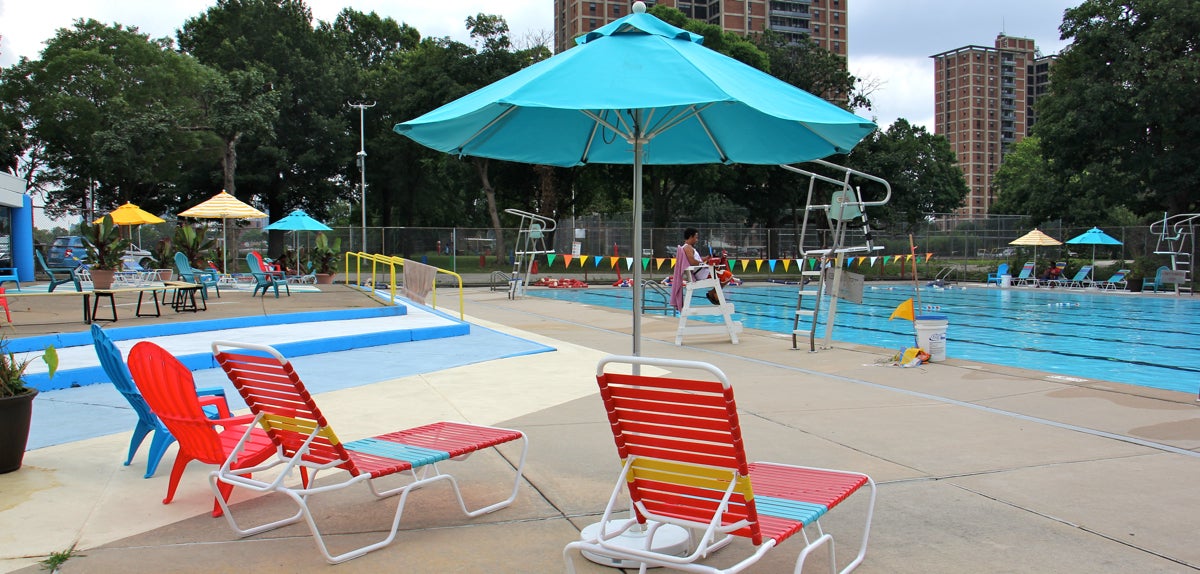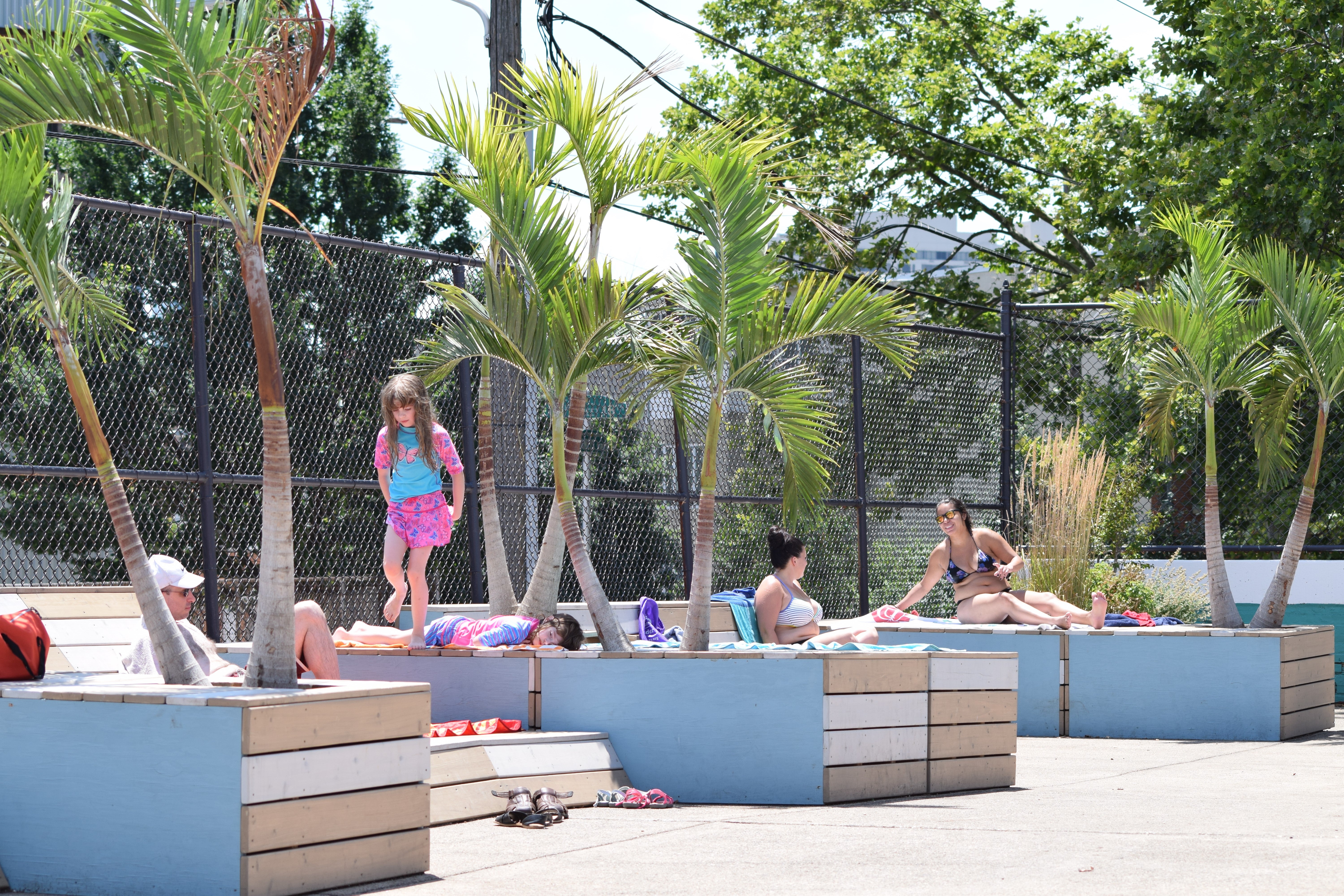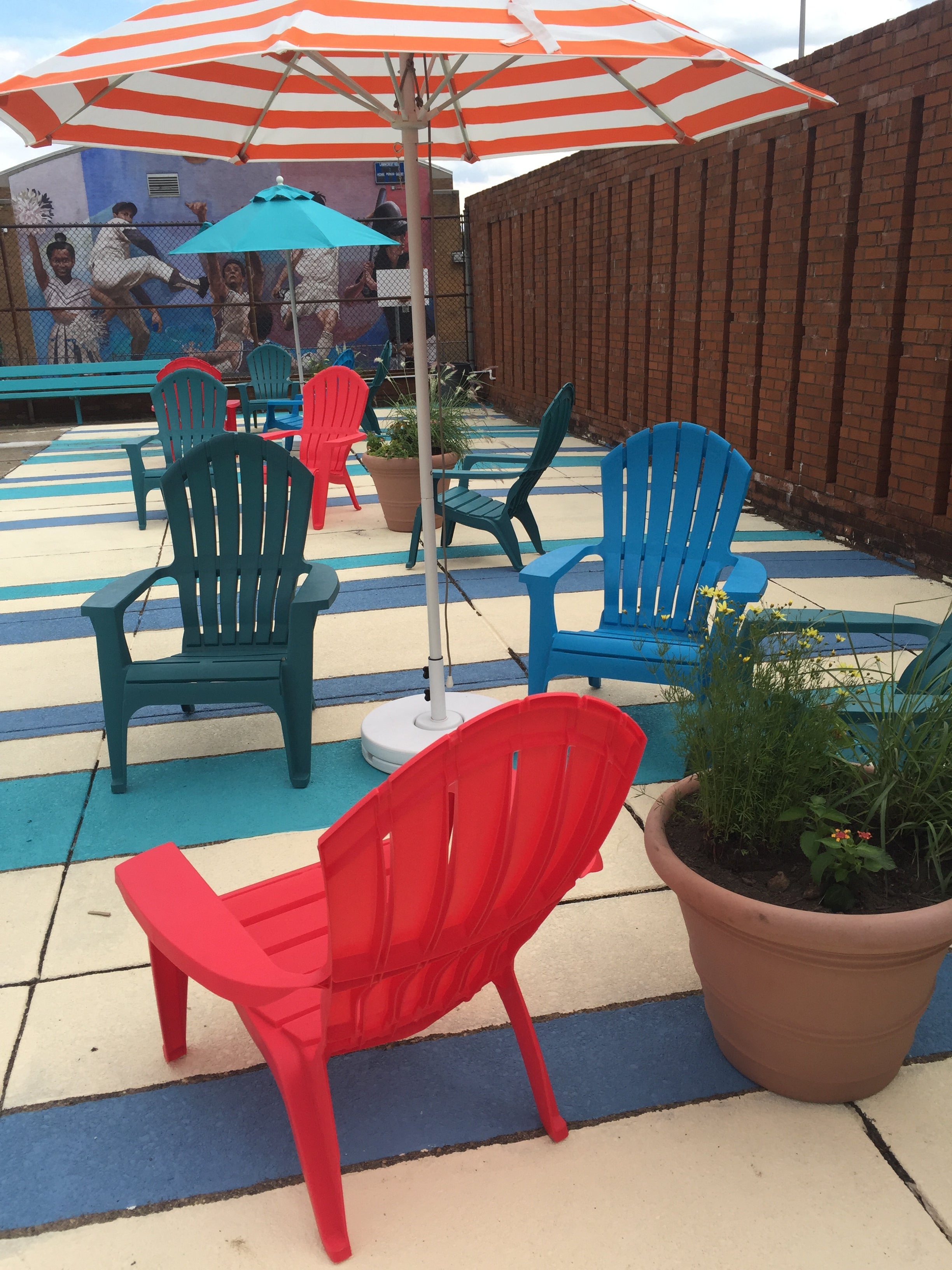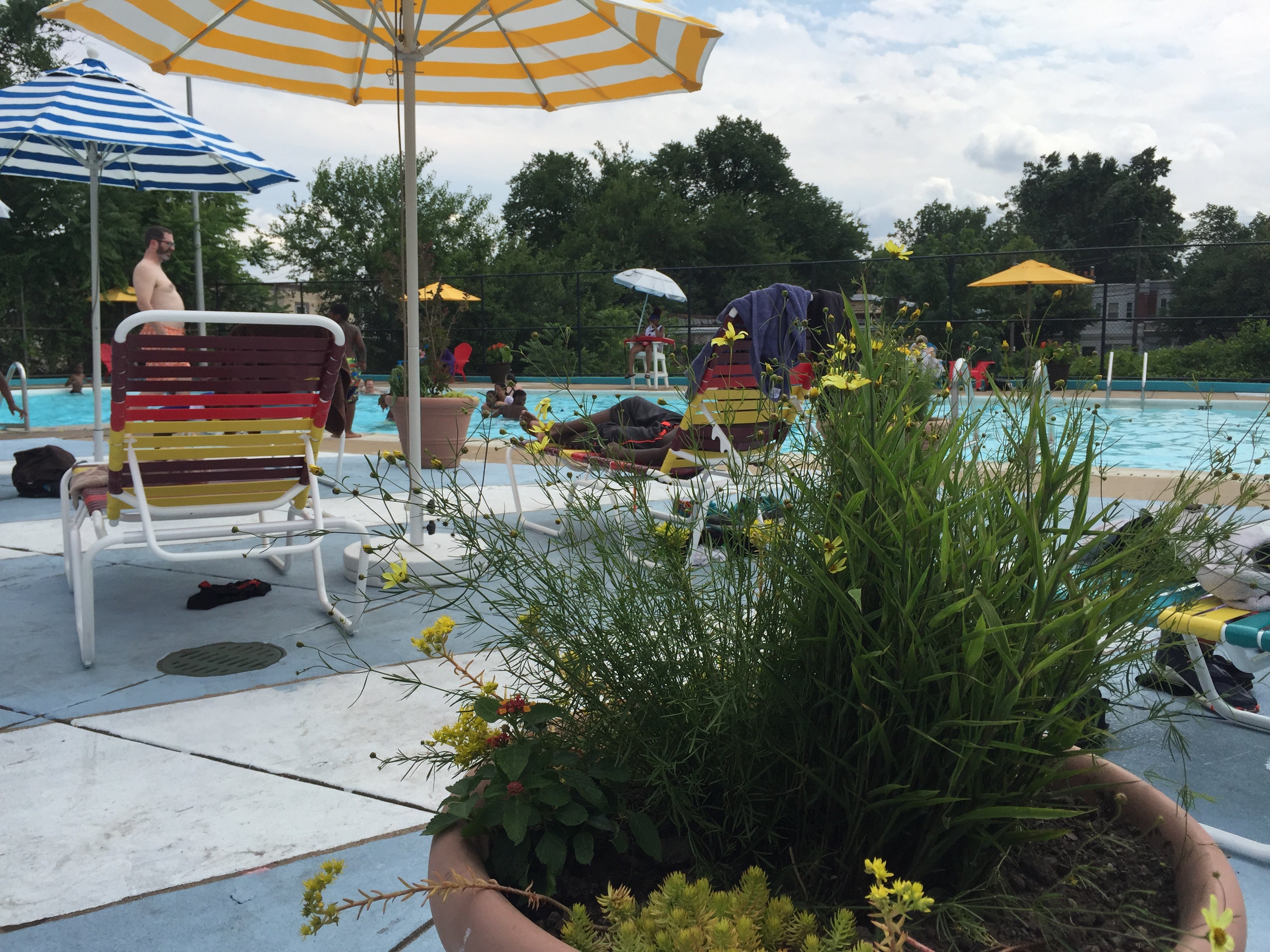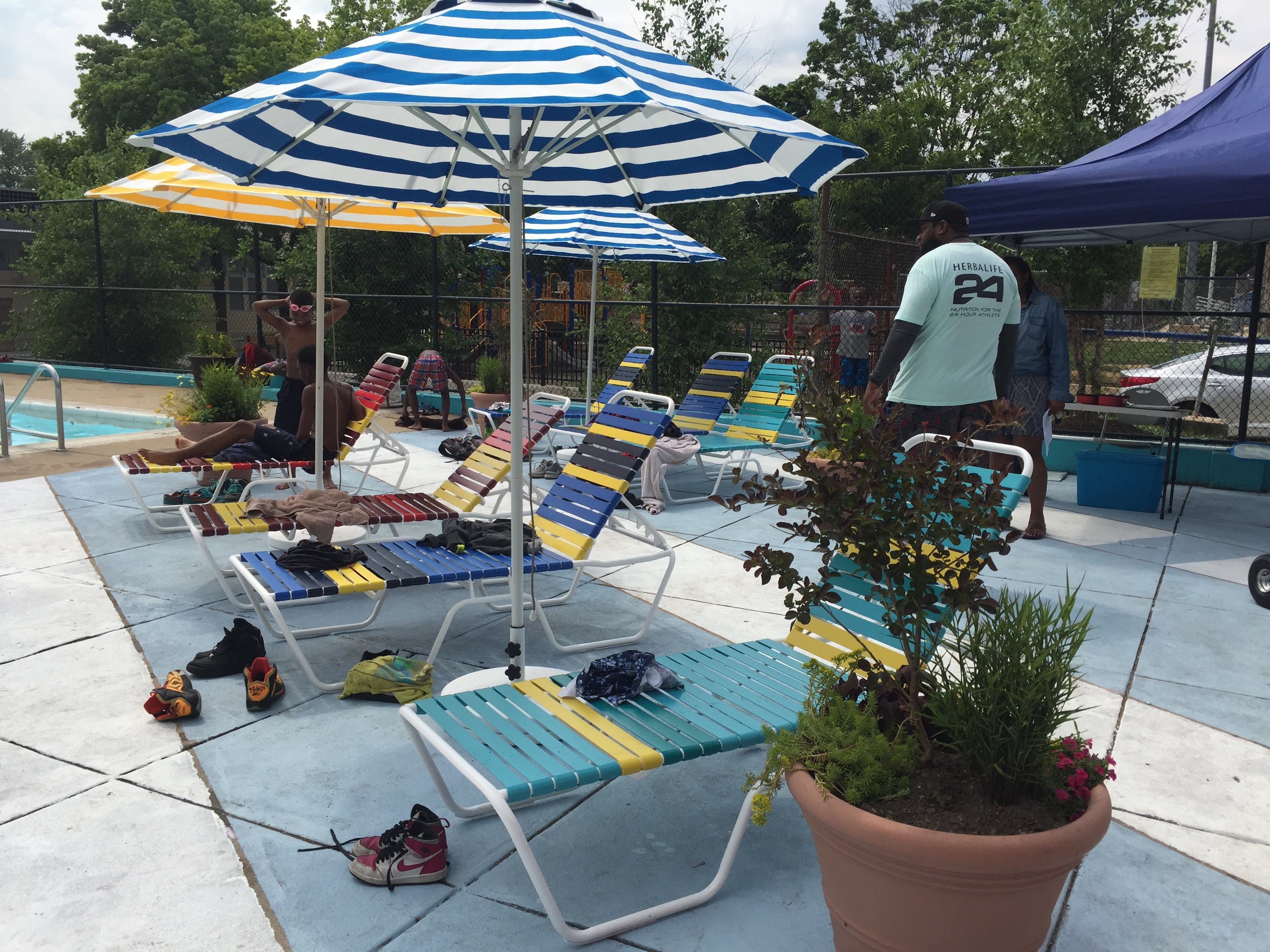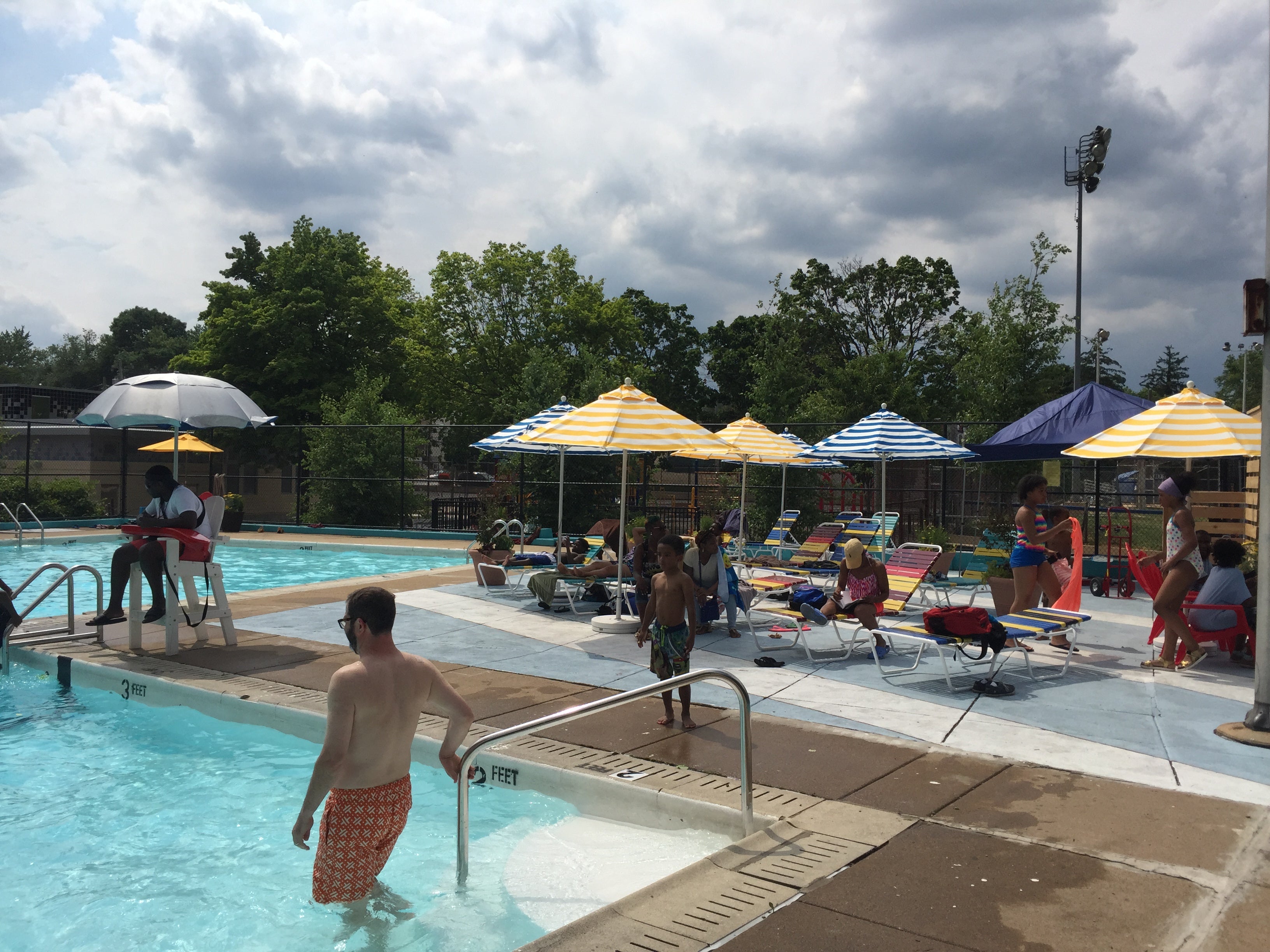‘Swim Philly’ upgrades four public pools through creative placemaking

Last year’s tropical makeover of the Francisville Playground pool deck by the Pop-Up Pool Project, a Knight Cities Challenge winner, was such a hit that the Department of Parks and Recreation has brought the program in-house, and expanded it to include four additional pools this summer.
The new initiative, called Swim Philly, adapts tactical urbanism’s “lighter, quicker, cheaper” approach poolside, adding colorful seating, umbrellas, planters, and other modestly-priced amenities to beautify Philadelphia’s concrete public pool decks. Swim Philly will also continue the free community programming, like Aqua Zumba, water aerobics, and poolside yoga, that organizers believe helped the Pop-Up Pool Project draw in more first-time pool users last year.
“We expanded the program because of the success we had at Francisville pool last summer,” said Alain Joinville, communications manager for Parks and Rec. “The community and the staff really liked the look and feel of the upgraded pool and the different amenities that were there. And we wanted to provide that opportunity to other pools throughout the city.”
This year, Parks and Rec selected a geographically diverse group of pools including Lee Cultural Center in West Philly, Lawncrest Recreation Center in the Northeast, Pleasant Playground in Mt. Airy, and O’Connor Pool at Markward Playground in southwest Center City for pop-up installations. The original pop-up at Francisville Playground is also back this summer.
“We tried to hit the different quadrants of the city, said Lisa Whittle, Program Coordinator for Aquatics and Ice Rinks at Parks and Rec, “We wanted to pick places that were diverse, and we wanted to see if these improvements would bring people from other parts of the city as a destination.”
Promoting greater socioeconomic integration in public spaces, by way of luring people who might be inclined to pay for private pools over to the public options, was a key objective of the Pop-Up Pool Project’s DNA that’s been preserved in the Swim Philly initiative.
Whittle explained that the name change to Swim Philly also reflects a shift in the program’s key players, now housed entirely within city government. Fairmount Park Conservancy and Knight Foundation are out; Power Corps and Philly Powered are in. Landscape architecture and design firm Sikora Wells Appel was retained by the city to design this year’s installations. Ben Bryant of Interface Studio, who submitted the original Knight Cities Challenge grant for the Pop-Up Pool Project, and who worked on the project through his former employer Group Melvin Design, is no longer involved.
“Knight is no longer part of the funding. We did have some money left over that I believe went into the design elements,” said Whittle, “But it’s city funding for the remaining part of it.”
Earlier in the year, the plan was to do installations at eight pools, but the Swim Philly team eventually decided this would stretch the project too thin, so they narrowed it to four.
“We’re hoping with these lower cost interventions that the city can maintain it, as opposed to having those major deck improvements like at Francisville,” said Whittle. “We’re seeing if we can get the same results with lower cost interventions”
Rosa Mannion of Sikora Wells Appel said this year’s pop-ups cost half as much as the original pop-up at Francisville, because Parks and Rec dropped their objection to movable furniture on the pool decks.
“Francisville got us over the hurdle of being allowed to have movable furniture on the decks, which kind of made that budget constraint go away,” she said, “If you have to design something that is immovable, the cost gets pretty high because it’s custom.”
Along with the deck seating, umbrellas, and plants, the team also stained the concrete decks to add a pop of color to the otherwise bland surfaces. The materials may have been cheaper, but the project required a lot of extra staff time to pull off.
“Lisa is in charge of all the pools in the city, and unfortunately she was the one running back and forth from the Sherwin Williams store to pick up all the stain for the concrete, over and over,” said Mannion.
Power Corps was integral to the project, power-washing and staining pool decks, painting, weeding, and preparing the sites. Parks and Rec staff stained some of the decks, and the O’Connor pool recruited a volunteer crew to paint theirs. Sikora Wells Appel staff were on-site installing seating and planters. Having neighborhood organizations to partner with is crucial, the team realized.
“If we’re going to get this out there, we need teams of people to manage these,” said Alain Joinville, “The management of these pop-ups is a lot of work. We already have our regular jobs, and then we are adding lots and lots more jobs to our already existing jobs and trying to get it done as efficiently as possible.”
All that hard work appears to be paying off, if the early response to the pools’ soft opening is any indication. So far, reactions have only been positive.
“At each of the pools, the pool staff would be like ‘wow this is like a resort,’ and that’s what we’re forcing on the city in a way,” said Mannion, “What they’re set up to provide is basically the bare minimum—a pool and concrete—and we’re adding amenities that are more typical of a resort or a private swim club where people pay for that amenity.”
George Matysik, executive director of the Philadelphia Parks Alliance, said friends he grew up with in Northeast Philly were excitedly texting him photos from the Lawncrest pool all last week, wondering if he had something to do with the improvements.
“It’s exciting because when you look at these pictures you think there’s no way this could be one of our city pools,” said Lisa Whittle, “We’ve never had things like that at our pools. It’s just concrete and the water, and now you look at it, you see what these low cost interventions can do.”
Parks and Recreation Commissioner Kathryn Ott Lovell told PlanPhilly she was a big proponent of the Pop-Up Pool Project when she was executive director of the Fairmount Park Conservancy, and she was a champion of bringing the project in-house once she became the Parks and Recreation Commissioner.
“Now that I am visiting pools every day, it’s really obvious to me that there’s a lot of opportunity to step up the amenities throughout our pool system,” she said.
Ott Lovell explained that a number of factors had kept Parks and Rec from embracing poolside seating in the past, not all of them related to safety, but projects like this one have prompted a rethink of some department policies.
“There’s a mindset in city government, certainly to keep people safe, but sometimes I think we defer to what’s easy for us,” she said, “It’s going to be easier for us to clean the pool deck if there are no chairs on it, but I think we’ve got to adapt, and not just think about what’s easiest for us. Our first responsibility has to be to keep kids safe. Our second responsibility is to make things fun.”
WHYY is your source for fact-based, in-depth journalism and information. As a nonprofit organization, we rely on financial support from readers like you. Please give today.



